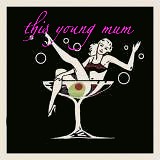Located in what is now the Great Smoky Mountain National Park in northeastern Tennessee, Cades Cove is a glimpse into the lives of a community of yesteryear. Having spent half of my life living in Tennessee, my family took many trips to the cove. As a child the wildlife was what attracted me the most: black bears, deer and various other animals that roam the park. The animals were what drew Native Americans, then later European frontiersmen to settle in this valley tucked safely between the “Smoky Mountains” which create a beautifully wooded view from all directions.
There isn’t much cultural evidence of the Cherokee Indians’ time spent in the cove, but there is an abundance of evidence from the settlers who came later. The Indians chose the cove for the bountiful wildlife easily hunted within the valley. The settlers, who first began moving into the cove in the early 1820s, preferred the cove for many reasons, two of which were the protection offered by the surrounding mountains and the fertile soil of the valley floor.
Since the land was excellent for farming, the settlers were able to grow multiple crops that could supplement them throughout the entire year. A few of the barns and storehouses used for farming are still standing.
As more people moved into the area, homes were built across the valley. These buildings were small homes, with tiny rooms for sleeping and slightly larger rooms for cooking and eating. Every home needed a fireplace to warm the people during frigid winters that often brought snowstorms. The settlers created their own road so they could visit one another easily. The road used now to tour the cove is the same road created by the early settlers. Eventually two churches were built as well, one Baptist and one Methodist. The Baptist church later feuded and split, resulting in the building of a second Baptist Church.
As more people settled in the cove, businesses were built to meet the needs. Because the nearest town was an entire day’s trip away on horse, Cades Cove became a self-sustaining community. A general store was built, along with a blacksmith shop, smokehouses and even a boarding house for travelers.
The people of Cades Cove depended greatly upon two crops: corn and chestnuts. The corn was used to feed the livestock and could be used in various ways as food for the people (cornmeal, grits, cornbread, hominy). The residents of the cove would take chestnuts into nearby Maryville to sell or trade for other goods, food or medicines.
Once knowledge of water as a power source spread to the cove, a man named John P. Cable, using the water from Mill Creek, created a functioning mill for grains. Other residents followed suit and eventually Cades Cove had several water-run mills, some for grains (to be turned into flour) and others for molasses. These advances gave the residents more options for trading, and helped the community to thrive. A post office was also built later as the rest of the United States began to grow and spread out.
Thanks to the flourishing crops and mills, population nearly exploded in the early years of the community. In less than fifty years there were an estimated 700 people residing within Cades Cove. Families were raising children, who would reach their teen years, marry and start their own families. Children were taught in the small churches by the pastors or at home by educated parents (although most of the adults who originally settled in the cove weren’t very well-educated). However, the majority of “education” taught to the children was the ins and outs of maintaining the farm (for the boys) and home (for the girls).
Eventually the great Western movement known as “Manifest Destiny” caught wind and many young families moved out of Cades Cove in search of a better life. A few families remained in the cove, the last of which did not leave until well after the cove was included into the National Park.

























I haven't been to the Smoky Mountains in a few years, which is sad because I love them. And hubby has never been! Makes me want to go visit Gatlinburg!
ReplyDeleteAnd yay for A++!
Way to go!! I've never been, but now I really wanna go.
ReplyDeletewow lady, fantastic paper. Congrats on your A++
ReplyDeletehttp://thebookworm07.blogspot.com/